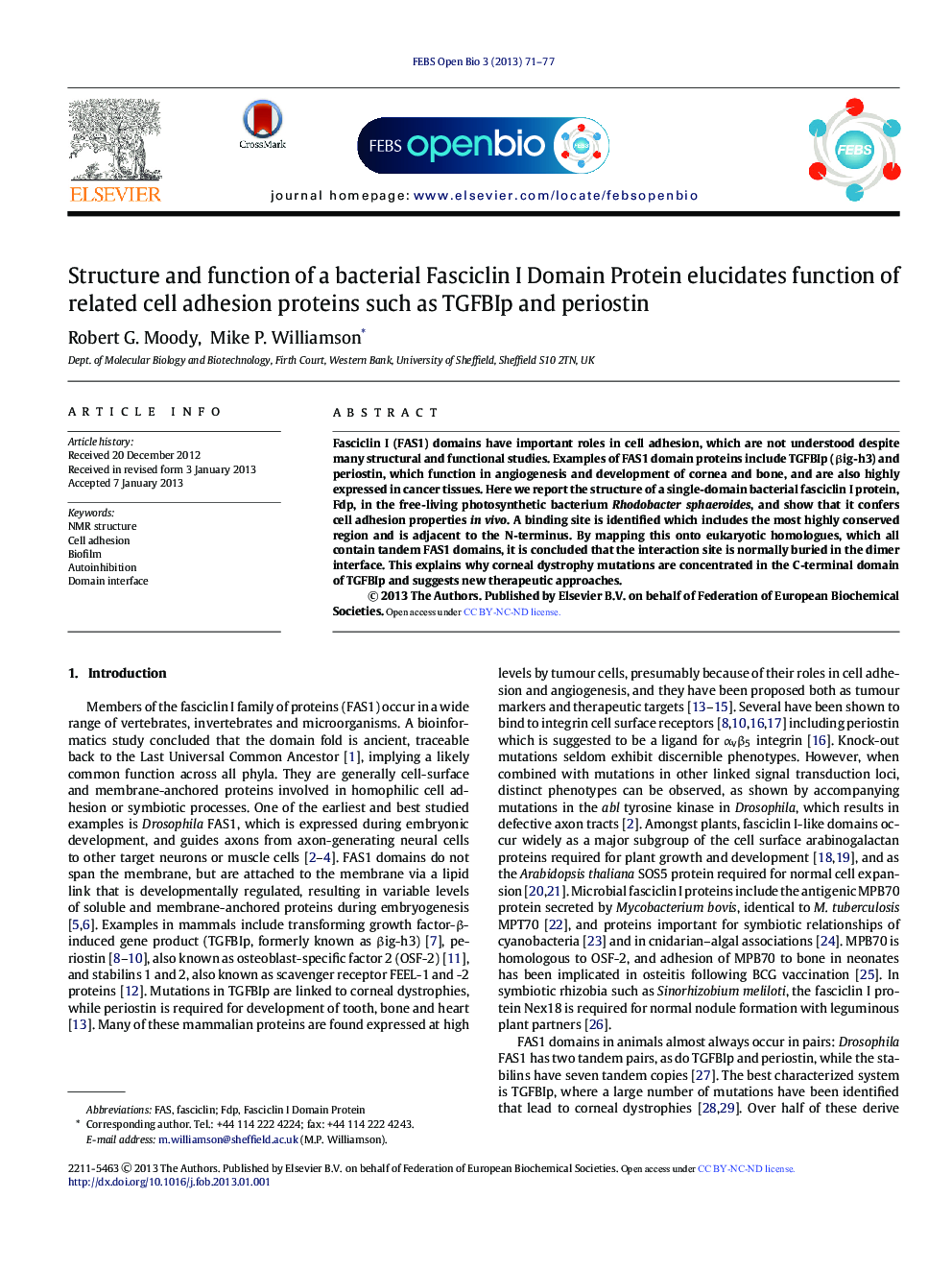| Article ID | Journal | Published Year | Pages | File Type |
|---|---|---|---|---|
| 1981765 | FEBS Open Bio | 2013 | 7 Pages |
Fasciclin I (FAS1) domains have important roles in cell adhesion, which are not understood despite many structural and functional studies. Examples of FAS1 domain proteins include TGFBIp (βig-h3) and periostin, which function in angiogenesis and development of cornea and bone, and are also highly expressed in cancer tissues. Here we report the structure of a single-domain bacterial fasciclin I protein, Fdp, in the free-living photosynthetic bacterium Rhodobacter sphaeroides, and show that it confers cell adhesion properties in vivo. A binding site is identified which includes the most highly conserved region and is adjacent to the N-terminus. By mapping this onto eukaryotic homologues, which all contain tandem FAS1 domains, it is concluded that the interaction site is normally buried in the dimer interface. This explains why corneal dystrophy mutations are concentrated in the C-terminal domain of TGFBIp and suggests new therapeutic approaches.
Graphical abstractFigure optionsDownload full-size imageDownload as PowerPoint slideHighlights▸ We report the NMR structure of a single-domain fasciclin I protein. ▸ We show that the protein enhances bacterial cell adhesion. ▸ A new alignment suggests that the binding site is in the H1 and H2 regions. ▸ We propose that in eukaryotic homologues, the binding site is buried in an interface.
